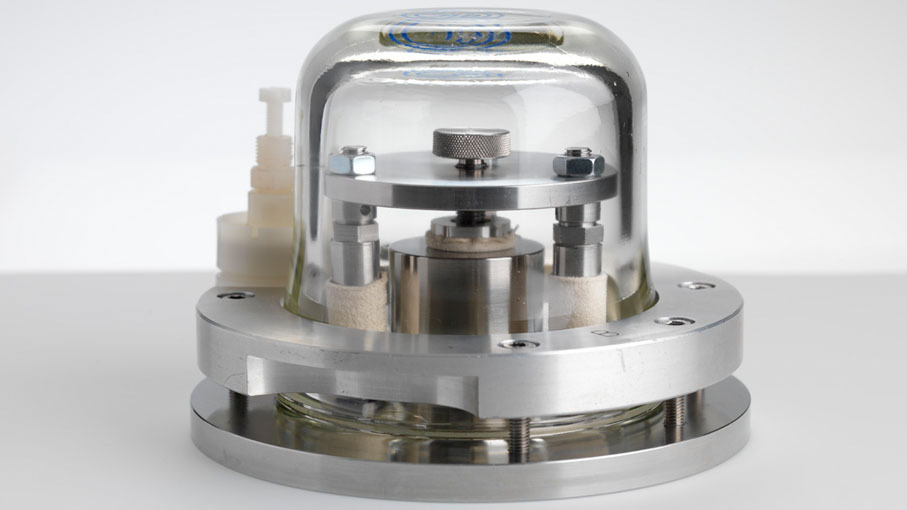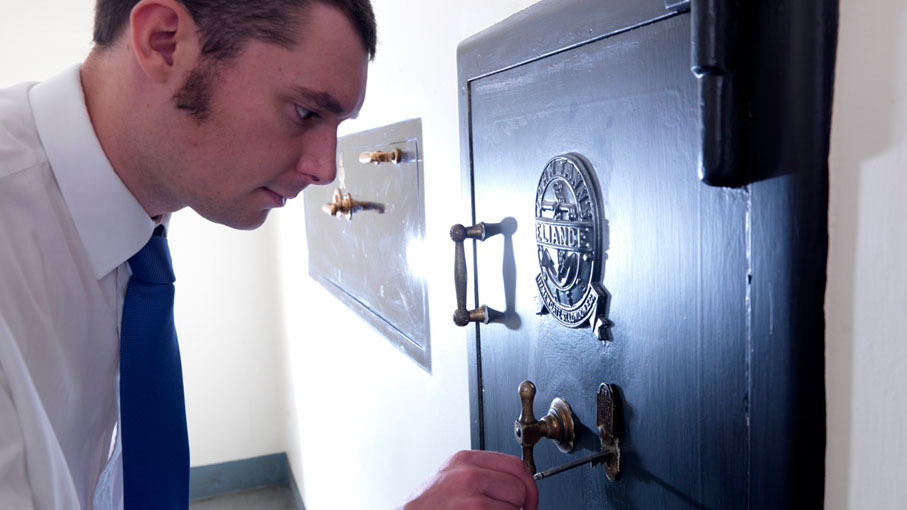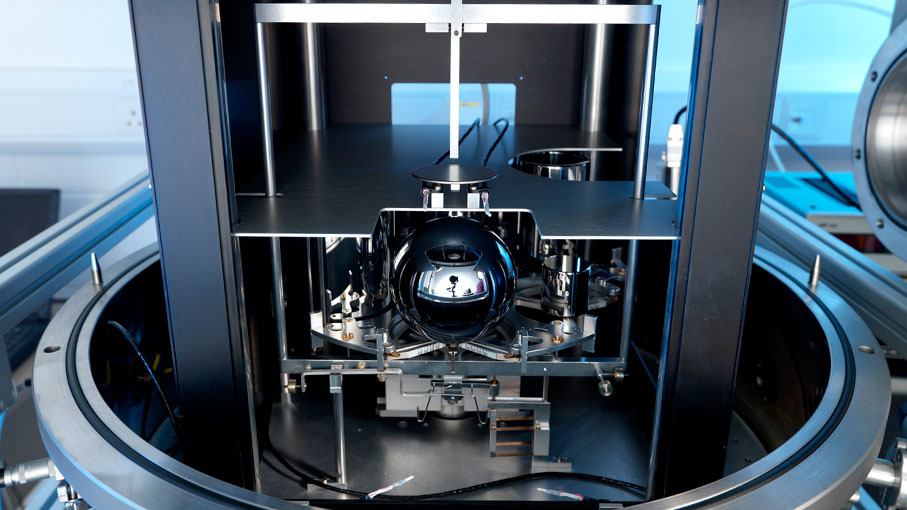The reference kilogram turned 125 years old

An international prototype without a protective case
In September 2014, 125 years have passed since the birth of the international kilogram prototype . The decision to create the standard was made at the General Conference of Weights and Measures on September 7-9, 1889 in Paris.
It is stored in the International Bureau of Weights and Measures near Paris and is a cylinder with a diameter and height of 39.17 mm made of platinum-iridium alloy (90% platinum, 10% iridium). Such a composition was chosen because of the high density of platinum, so that the standard can be made relatively small in size: the matchbox is smaller in height.

UK national kilogram prototype in a protective case, 18th copy of the international prototype
The mass of the international prototype approximately corresponds to 1 liter of water at a temperature of 4 ° C, and its weight depends on the height above sea level and gravity.
When the international prototype was made, 40 copies of the same platinum-iridium alloy were made with it. They were sent to the national bureau of weights and measures in different countries, so that scientists do not have to go to the main standard every time for measurements.
National prototypes are checked against the main prototype every 40 years. The last test took place in 1989, and then the maximum difference in weight was 50 micrograms. These deviations worry scientists. They understand that the mass of a particular sample changes over time due to physical damage and the appearance of other artifacts.

The national prototype is stored in the safe of the National Physical Laboratory
. Unfortunately, for the international prototype this anniversary will most likely be the last. Two experiments to create more accurate mass standards are nearing completion. Their goal is to determine mass through a natural constant of nature, and not through a reference sample.
One of the experiments involves determining the kilogram through the Planck constant. To do this, measure the current passing through the [wire] coil in a magnetic field, in relation to the force of gravity acting on a kilogram, explainSpecialists of the National Physical Laboratory of Great Britain, where, in honor of the 125th anniversary of the kilogram, they opened a holiday section on the site. It was in the UK in 1975 that they started the watt balance experiment, which is now continuing in Canada.
Another method is proposed by German experts: as part of the Avogadro project, they create a silicon sphere the size of a grapefruit, which contains about 50 septillion silicon-28 atoms.

Silicon sphere of Avogadro
Since the mass of silicon and the density of matter are known, the reference value of a kilogram can be linked to the volume of the sphere and, accordingly, to the Avogadro constant.

Avogadro sphere mass measurement
A kilogram remained the last SI unit, which is expressed through a physical standard. This indicates that 125 years ago, physicists very competently chose the material for the manufacture of the prototype. And even if it is soon taken out of use, it has served well over the years.
